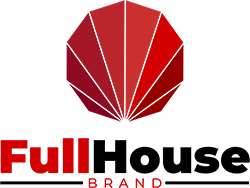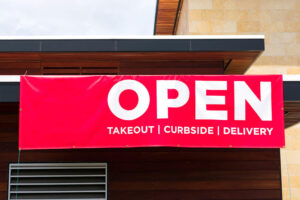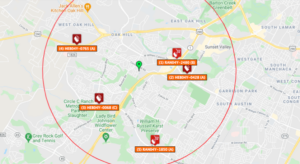Today, more and more small businesses are getting caught up paying for impressions online. Sure, you can pay to boost your content on Instagram or run Facebook Ads, but unless you’re shelling out thousands of dollars at a time, it’s not in your best interest to use these forums.
Why You Shouldn’t Pay For Impressions
Platforms will try to trick you with their CPM (Cost per 1,000 impressions) models, and the temptation to throw $12 in for a couple hundred more views is hard to ignore. That being said, it’s not necessarily sustainable, and it’s a shortcut that won’t pay off on your future content.
National chains are throwing thousands of dollars into these same programs to take advantage of the model entirely. Just as your $12 may get you 200 more impressions, their $1200 is going to bring them thousands of impressions on each post. With the number of bots or out-of-state viewers that traffic brings in, you’ll need thousands of impressions to guarantee you’re reaching anyone.
If this all sounds too complicated for you, there’s one other reason why you shouldn’t purchase impressions: you’ll end up having to do it every time.
Instead of creating a following organically (meaning through strong content and social media marketing), you’ll have to pay to reach that many viewers every time.
A viewer who finds your post on their explore page because you successfully tagged it and produced interesting, relevant content is more likely to follow you. Conversely, someone who sees your post “promoted†on their feed will likely look for a second and then scroll past. That one-second look counts as an “impression†but won’t lead to a new follower.
In this way, you can either grow a following that will boost your future content or have the posts you pay for stand out against those you don’t.
Paid vs. Free Options on Facebook
Facebook Marketplace is one of the most interesting rising e-commerce centers, but it’s not necessarily where every business wants to sell its goods. Part of the marketplace’s strength is in Facebook’s ads which can link relevant audiences right to the products they want to find in the marketplace.
These same ads can also link users directly to your website, menu, or appointment book, so they are something to experiment with, but only if you’re ready to cash in on one big promotion. The strength of Facebook Ads is they use all the information people have put into their personal Facebook profiles to target potential customers online.
For example, an outdoor sports shop can use Facebook Ads to show its digital fliers to every person in Denver who “liked†kayaking, skiing, or mountain biking.
If you’re not in it for this extreme data mining and targeting, you’re better off not paying for these ads. Instead, look into creating a free business profile similar to the one you may have created for yourself years ago. A business profile is a great stepping stone from which guests can find you online before setting up a complete website.
How to Make the Most of “Business Profilesâ€
Without paid ads, your exposure on Facebook will be limited to the audiences that Facebook thinks will like your business. Once you set up your page and have your friends and family follow your business, your page will show up to similar audiences (or their friends and followers) whenever they engage with your content.
To make sure people can find your page, you can also “optimize†it. This means filling in relevant details so you show up in relevant searches.
For example, you’ll want to include your address so you show up in local searches, your cuisine style so you show up in niche searches, and your hours so people can find you when they search “open now.â€
No matter the platform, it’s essential to fill out your profile with as much data as possible. Make sure to select relevant tags wherever you can, as this makes it so much easier for your profile to be found online.
Create a Marketing Strategy
Once you’ve optimized your page, you need to figure out what kind of content you want to create and how often. It’s essential to take this step seriously and design a “content strategy†so you can keep up with your advertising goals down the line.
Try to identify trends in your niche or what kinds of products or services your competitors are promoting. Ask yourself if you want to run an actual promotion online by posting digital flyers to your page or drive traffic by posting irresistible photos of your food or salon services.
Think about the content you find yourself engaging with organically. What kinds of posts are you drawn to? Do you have the means to create similar content?
After you have a sense of how your competitors are advertising, you can always try to go after “white space†in your market as well. Is something missing from their campaigns? Are they forgetting about a valuable audience? Do your best to research how their content is performing so you can see what works and set yourself up for success.
Combine Your Efforts With Targeted Advertising
If you’re having trouble driving traffic to your pages, consider running another campaign on the ground. Through grocery store advertising, you can share your ad with thousands of customers each week — all of whom are guaranteed to live in your area.
With programs like coupon receipt advertising, you can send every single shopper home with your supermarket advertisement and print your social media handles on your coupons.
Combining the hyper-local targeting grocery store advertising allows with a solid social media campaign is the perfect way to get the word out about your business and make sure your customers have something exciting to discover.
When they search the handle you include on your supermarket advertisement and find your profile filled out with valuable content, they’re likely to give you a follow. Best of all, each of those local customers is 100 times more likely to shop with you than the average social media follower.
Source: RTUI/Indoor Media – June 18, 2021
Request your grocery receipt advertising quote today:
info@fullhousebrand.com




